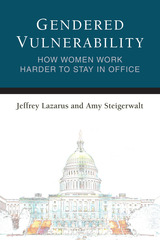
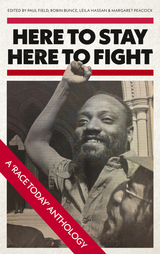
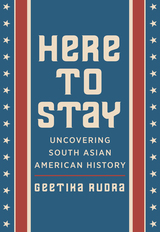
In Here to Stay, Geetika Rudra, a second-generation Indian immigrant and American history buff, takes readers on a journey across the country to unearth the little-known histories of earlier generations of South Asian Americans. She visits storied sites such as Oregon’s “Hindoo Alley,” home to many lumber workers at the turn of the century, and Angel Island, California’s immigration hub. She also introduces readers to such inspiring figures as Bhagat Singh Thind, an immigrant who had enlisted in the U.S. Army to serve his adopted country in World War I, but who was later denied citizenship and took his case all the way to the U.S. Supreme Court. In turns both serious and joyful, this book vividly reveals how South Asians have always been a vital part of the American tapestry.
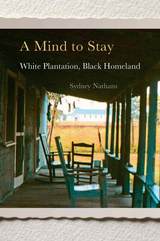
The exodus of millions of African Americans from the rural South is a central theme of black life and liberation in the twentieth century. A Mind to Stay offers a counterpoint to the narrative of the Great Migration. Sydney Nathans tells the rare story of people who moved from being enslaved to becoming owners of the very land they had worked in bondage, and who have held on to it from emancipation through the Civil Rights era.
The story began in 1844, when North Carolina planter Paul Cameron bought 1,600 acres near Greensboro, Alabama, and sent out 114 enslaved people to cultivate cotton and enlarge his fortune. In the 1870s, he sold the plantation to emancipated black families who worked there. Drawing on thousands of letters from the planter and on interviews with descendants of those who bought the land, Nathans unravels how and why the planter’s former laborers purchased the site of their enslavement, kept its name as Cameron Place, and defended their homeland against challengers from the Jim Crow era to the present day.
Through the prism of a single plantation and the destiny of black families that dwelt on it for over a century and a half, A Mind to Stay brings to life a vivid cast of characters and illuminates the changing meaning of land and landowning to successive generations of rural African Americans. Those who remained fought to make their lives fully free—for themselves, for their neighbors, and for those who might someday return.
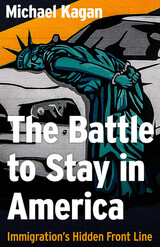
"Day-to-day life in immigrant communities is described with refreshing clarity and heart... an unusually accessible primer on immigration law and a valuable guide to the ways it currently works to perpetuate an excluded immigrant underclass with diminished rights."
—The New York Review of Books
The national debate over American immigration policy has obsessed politicians and disrupted the lives of millions of people for decades. The Battle to Stay in America focuses on Las Vegas, Nevada–a city where more than one in five residents was born in a foreign country, and where the community is struggling to defend itself against the federal government’s crackdown on undocumented immigrants. Told through the eyes of an immigration lawyer on the front lines of that battle, this book offers an accessible, intensely personal introduction to a broken legal system. It is also a raw, honest story of exhaustion, perseverance, and solidarity. Michael Kagan describes how current immigration law affects real people’s lives and introduces us to some remarkable individuals—immigrants and activists—who grapple with its complications every day. He explains how American immigration law often gives good people no recourse. He shows how under President Trump the complex bureaucracies that administer immigration law have been re-engineered to carry out a relentless but often invisible attack against people and families who are integral to American communities.
Kagan tells the stories of people desperate to escape unspeakable violence in their homeland, children separated from their families and trapped in a tangle of administrative regulations, and hardworking long-time residents suddenly ripped from their productive lives when they fall unwittingly into the clutches of the immigration enforcement system. He considers how the crackdown on immigrants negatively impacts the national economy and offers a deeply considered assessment of the future of immigration policy in the United States. Kagan also captures the psychological costs exacted by fear of deportation and by increasingly overt expressions of hatred against immigrants.
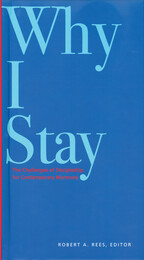
Mormonism is a community with two faces: progressive and conservative. This is true of nearly all faith traditions, which can be alternately open or defensive, traditional or innovative, accepting or judgmental. In the case of the LDS Church, it continues, a century after having shaken off the stigma of polygamy, three decades after embracing blacks as equals, and in the face of international growth, to wrestle with freeing itself from its past insularity. In doing so, it will find its place within the larger religious world and its accommodation to the challenges of modernism.
This all represents a challenge for individual members, especially for artists, scholars, and independent thinkers. The poet Robert Haas has made a distinction between religion, which is “communal worship centered on shared ideas of the sacred,” and spirituality, which “has to do with the individual soul’s struggle with its own meaning.” In this anthology, sixteen Latter-day Saints explain how they balance the demands of religion and spirituality in the modern Church. It brings to mind the example of LDS educator Lowell Bennion who offered the image of carrying water on both shoulders to explain the binary nature of balancing faith with reason, institutional commitment with individual integrity, obedience with love.
It is encouraging to discover so many Latter-day saints who, the editor writes, “neither stay with their faith blindly nor leave it rebelliously, but rather choose to struggle with challenges and strive for a more mature discipleship.” The contributors to this anthology are Lavina Fielding Anderson, Mary Bradford, William Bradshaw, Claudia L. Bushman, Fred Christensen, Lael Littke, Armand Mauss, Chase Peterson, Grethe Peterson, J. Frederick “Toby” Pingree, Gregory Prince, Robert A. Rees, Tom Rogers, William D. Russell, Cherry Bushman Silver, and Morris Thurston.
READERS
Browse our collection.
PUBLISHERS
See BiblioVault's publisher services.
STUDENT SERVICES
Files for college accessibility offices.
UChicago Accessibility Resources
home | accessibility | search | about | contact us
BiblioVault ® 2001 - 2024
The University of Chicago Press









